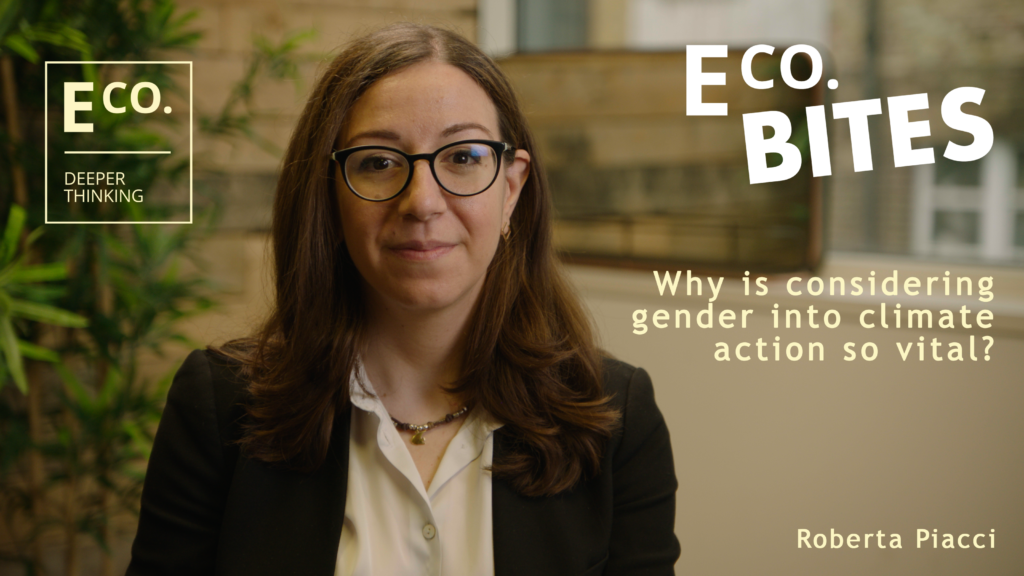E Co. bites: Why is considering gender into climate action so vital?
7 October 2022, Category: All insights, E Co. bites, Tags: climate change, climate finance, E Co. bites, gender, Green Climate Fund, project design

Why is considering gender into climate action so vital?
Considering and centering ideas and conversations regarding gender within climate action is crucial for several reasons. First of all, mainstreaming gender within climate-resilient project design works to account for the different needs that different genders have within mitigation or adaptation projects. For example, the impacts of climate change disproportionally affect women across the globe, heightening in scenarios where increased rates of marginalisation based on economic and cultural standards occur.
We asked our consultant, Roberta Piacci, to delve into this topic and explain her thoughts on why considering gender into climate action is so important.
Our E Co. bites cover a variety of topics related to climate change and climate finance. If you’re looking for more information on either of these topics and how they relate to each other, head to our E Co. bites page and explore videos featuring more of our passionate staff.
– TRANSCRIPT-
For a long time, climate projects have been designed in a way that is gender-blind, without taking into account the needs and the reality of women. But climate change is not gender-neutral: it increases exposure to all sorts of risks for women, as it heightens the likelihood of extreme weather events, for which mortality of women, especially if economically and culturally marginalised, tends to be higher, as well as of internal displacement and conflict, which disproportionally affect women. It can have a direct impact on food security, economic and social development.
However, by mainstreaming gender and adopting gender transformative actions in climate projects, we can both advance gender outcomes and improve climate mitigation and adaptation results. A few facts: women are powerful conservation agents in forestry, as they engage more than men in non-timber forest products and are more inclined to adopt sustainable solutions that supports food security of their families and communities. It is also estimated that by giving women the same productive resources as men, productivity would increase by 20 or 30%, which would reduce the number of hungry people by 100 to 150 million.
When we develop projects, we ensure that gender is mainstreamed from the very beginning, and is included, not only as a stand-alone and separate activity, but integrated throughout each component of the project. By doing so, we ensure that the needs of women and men, girls and boys, are adequately understood and addressed, so that each of them can provide their own contribution in the global fight towards climate justice.
-END-
Mainstreaming gender within climate action
Do you have any thoughts on how development projects can better include gender in their planning and scope? Have your say in the comments section below.
Let’s accelerate progress together: Get in touch with our climate finance consultants to discuss a project you’re working on. Email us at: amy@ecoltdgroup.com or find us at the following:
Twitter: @ecoltdnews
LinkedIn: E Co.
Instagram: @ecoltdnews
Join the conversation by posting a comment below. You can either use your social account, by clicking on the corresponding icons or simply fill in the form below. All comments are moderated.